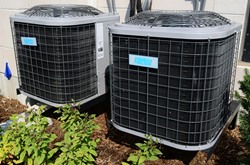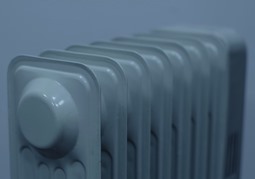How to Choose the Right Heating and Cooling Training Program near Interior South Dakota
 Now that you have come to a decision on a career as a heating and cooling specialist, the next step is to locate an HVAC vocational school near Interior SD. But with so many to choose from, how do you choose the best one to obtain the training that you need? A number of potential students will make their choice based exclusively on the cost of tuition or how close the school is to their residence. While these are necessary considerations, they are not the only ones to evaluate. Some of the other details that you need to investigate are the graduation completion rates of the HVAC schools, their reputations, and if they are accredited by professional trade organizations. Those and other criteria will be covered in more detail later within this article. But before we examine how to select an HVAC trade school, let’s take a look at what a heating and air conditioning technician does to become a licensed professional tradesman.
Now that you have come to a decision on a career as a heating and cooling specialist, the next step is to locate an HVAC vocational school near Interior SD. But with so many to choose from, how do you choose the best one to obtain the training that you need? A number of potential students will make their choice based exclusively on the cost of tuition or how close the school is to their residence. While these are necessary considerations, they are not the only ones to evaluate. Some of the other details that you need to investigate are the graduation completion rates of the HVAC schools, their reputations, and if they are accredited by professional trade organizations. Those and other criteria will be covered in more detail later within this article. But before we examine how to select an HVAC trade school, let’s take a look at what a heating and air conditioning technician does to become a licensed professional tradesman.
Becoming an HVAC Technician
 HVAC is an acronym that is widely used in the industry that stands for “Heating, Ventilation and Air Conditioning”. HVAC professionals provide services for the installation, repair and maintenance of central air conditioners, furnaces, boilers, water heaters and heating systems. As skilled tradesmen, they are typically mandated to be licensed, though each state and regional municipality has its own criteria. Earning professional certification is not mandatory, but a voluntary means for Interior SD HVAC specialists to demonstrate that they are highly skilled and accomplished in their area of specialization. There are multiple acknowledged certifications within the industry that are offered. Below are a few of the significant ones.
HVAC is an acronym that is widely used in the industry that stands for “Heating, Ventilation and Air Conditioning”. HVAC professionals provide services for the installation, repair and maintenance of central air conditioners, furnaces, boilers, water heaters and heating systems. As skilled tradesmen, they are typically mandated to be licensed, though each state and regional municipality has its own criteria. Earning professional certification is not mandatory, but a voluntary means for Interior SD HVAC specialists to demonstrate that they are highly skilled and accomplished in their area of specialization. There are multiple acknowledged certifications within the industry that are offered. Below are a few of the significant ones.
- North American Technician Excellence (NATE). NATE is a nationally recognized certification for HVAC techs. The certification is achieved by passing a proficiency examination and can be earned in one or more specialties.
- HVAC Excellence. This certification makes available both a professional and a master specialist credential. Two years of professional experience in addition to passing a comprehensive exam are required for the professional level certification. Master specialists must have three years of experience as well as a passing score on the professional level exam. Similar to NATE, certifications are made available in various specialties.
- EPA Section 608. This certification is mandatory for technicians that handle refrigerants. There are 3 types of certification obtainable, one for small appliances, and the additional two for low and high pressure refrigerants.
Because licensing might be required in your area, and you may also wish to acquire certification, it’s important that you choose an HVAC vocational school that will train you for both. And since you will more than likely be handling refrigerants, make sure that the program you select preps you for passing the EPA Section 608 exams.
HVAC Degree Training Programs
 There are a number of choices available for HVAC training in a trade or technical school. You can attain a certificate, an Associate Degree, or a Bachelor’s Degree. Acquiring a certificate will take the least period of time, often achieved in just 6 months, however some courses are longer. A certificate will qualify you for the majority of HVAC positions, particularly if you are licensed and have certification relevant to the position. The degree programs can provide a competitive edge in the job market and will furnish more comprehensive training than the certificate programs. Following is a brief summary of each credential offered near Interior SD.
There are a number of choices available for HVAC training in a trade or technical school. You can attain a certificate, an Associate Degree, or a Bachelor’s Degree. Acquiring a certificate will take the least period of time, often achieved in just 6 months, however some courses are longer. A certificate will qualify you for the majority of HVAC positions, particularly if you are licensed and have certification relevant to the position. The degree programs can provide a competitive edge in the job market and will furnish more comprehensive training than the certificate programs. Following is a brief summary of each credential offered near Interior SD.
- Certificate. Generally requiring a high school diploma, certificate programs are preferred among entry level residential or commercial HVAC professionals. They furnish a solid foundation of skills for employment within the industry.
- Associate Degree. The Associate Degree in HVAC program supplies a more detailed knowledge of heating and a/c systems than the certificate program. Generally requiring two years to complete, many degrees incorporate an internship or work-study program.
- Bachelor’s Degree. The Bachelor’s Degree in HVAC is suited more towards a career in management or even business ownership. Some programs require an Associate Degree, while others are a conventional 4 year program. In addition to mastering how to service and maintain heating and air conditioning systems, you will also study how to design them.
Picking the ideal credential program will be dependent on what your future career objectives are, as well as the time and money that you have to commit. One approach is to begin with a certificate or perhaps an Associate Degree program, and after getting some experience in the trade in Interior SD, eventually going back to earn a Bachelor’s Degree. If this is your strategy, make sure to ask the HVAC technician school you are considering about how their returning student program works.
HVAC Online Schools
 Attending an HVAC program online is one approach to obtaining your training and receiving a certificate or degree. Almost all schools will require some attendance on campus to take part in practical training. Many also sponsor internship or work-study programs in addition to or instead of practical lab work. But since the balance of the classes may be attended online, this approach may be a more accessible solution for some Interior SD students that are short on time. And many online degree programs are cheaper than other traditional alternatives. Even driving expenses from Interior and study supplies can be reduced, helping to make schooling more affordable. And numerous online schools are fully accredited (more on this later). So if your work or family commitments have left you with minimal time to attend classes, perhaps an online HVAC degree program will make it easier to fit school into your active schedule.
Attending an HVAC program online is one approach to obtaining your training and receiving a certificate or degree. Almost all schools will require some attendance on campus to take part in practical training. Many also sponsor internship or work-study programs in addition to or instead of practical lab work. But since the balance of the classes may be attended online, this approach may be a more accessible solution for some Interior SD students that are short on time. And many online degree programs are cheaper than other traditional alternatives. Even driving expenses from Interior and study supplies can be reduced, helping to make schooling more affordable. And numerous online schools are fully accredited (more on this later). So if your work or family commitments have left you with minimal time to attend classes, perhaps an online HVAC degree program will make it easier to fit school into your active schedule.
Questions to Ask HVAC Training Programs
 Once you have picked the type of degree or certificate that you wish to earn, either online or on campus, you can begin to limit your selection of schools. As you are certainly aware, there are numerous HVAC vocational schools in the Interior SD area and all over the Country to pick from. That’s why it is very important to have a checklist of key qualifiers when making school assessments. As earlier stated in our opening paragraph, location and tuition will undoubtedly be the initial 2 variables you will consider. Following are several additional ones that you need to investigate before enrolling in your school of choice.
Once you have picked the type of degree or certificate that you wish to earn, either online or on campus, you can begin to limit your selection of schools. As you are certainly aware, there are numerous HVAC vocational schools in the Interior SD area and all over the Country to pick from. That’s why it is very important to have a checklist of key qualifiers when making school assessments. As earlier stated in our opening paragraph, location and tuition will undoubtedly be the initial 2 variables you will consider. Following are several additional ones that you need to investigate before enrolling in your school of choice.
Accreditation. Many HVAC vocational programs in the Interior SD area have received either a regional or a national accreditation. They can acquire Institutional Accreditation, which involves the school’s programs overall, or Programmatic Accreditation, which relates to a specific program, for example HVAC technology. Make sure that the program and school are accredited by a U.S. Department of Education recognized accrediting organization, for example the Accreditation Board for Engineering and Technology. Along with helping guarantee that you acquire a superior education, it can help in acquiring financial assistance or student loans, which are in many cases not available for non-accredited programs. Additionally, a number of states require that the HVAC training course be accredited for it to qualify for licensing.
High Completion Rates. Ask the Heating and Cooling schools you are looking at what their completion rates are. The completion rate is the percentage or portion of students who enroll in and finish the program. A lower completion rate could suggest that students were dissatisfied with the course and dropped out. It may also suggest that the teachers were not qualified to train the students. It’s similarly important that the schools have higher job placement rates. Older and/or more reputable schools may have a more extensive directory of graduates, which can produce more contacts for the school to utilize for their apprenticeship and job placement programs. A high job placement rate can not only validate that the school has an excellent reputation within the industry, but additionally that it has the network of Interior SD HVAC employers to assist grads secure apprenticeships or employment.
Apprenticeship Programs. A large number of HVAC technical programs are taught together with an internship or an apprenticeship program. Those participating trade and technical schools will help place you in an apprenticeship program inside their network of HVAC companies or labor unions. Check if the schools you are comparing have working relationships with local Interior SD HVAC contractors. An apprenticeship not only provides a valuable experience by supplying hands-on training, but it also provides employment opportunities and helps to establish relationships in the local HVAC professional community.
Modern Facilities. Make sure that the campus facilities and the tools that you will be instructed on are state-of-the-art and what you will be using on the job. If you are presently in an internship or an apprenticeship, consult with the HVAC tech you are working under regarding what you should be looking for. If not, ask a local Interior SD HVAC contracting company if they can give you some suggestions. Additionally bear in mind that unless you are willing to relocate, the school needs to be within driving distance of your Interior SD residence. Take note that if you decide to attend an out-of-state school, besides the added relocation costs there may be increased tuition fees compared to in-state residents.
Smaller Classes. It’s desirable that you receive as much individualized training as possible, which can be difficult in bigger classes. Ask if you can monitor a couple of the classes so that you can see how large they are and experience the interaction between teachers and students. Speak to some of the students and get their comments regarding class sizes and instruction. Finally, talk with some of the teachers and learn what their level of experience is and what degrees or certifications they have earned.
Flexible Scheduling. Make sure that the class schedules for the schools you are evaluating are flexible enough to meet your needs. If you are only able to go to classes in the evening or on weekends near Interior SD, confirm that the programs you are reviewing provide those options. If you can only attend on a part-time basis, make sure that the school you select offers part-time enrollment. Finally, check out what the protocol is to make-up classes should you miss any due to work, illness or family responsibilities.
Considering an HVAC School near Interior SD?
Perhaps you are considering enrolling in an HVAC training program in the Interior South Dakota area. If so, you may find the following background information about the location of your new school campus both interesting and informative.
Interior, South Dakota
According to the United States Census Bureau, the town has a total area of 1.35 square miles (3.50 km2), of which, 1.34 square miles (3.47 km2) of it is land and 0.01 square miles (0.03 km2) is water.[2]
As of the census[3] of 2010, there were 94 people, 40 households, and 24 families residing in the town. The population density was 70.1 inhabitants per square mile (27.1/km2). There were 55 housing units at an average density of 41.0 per square mile (15.8/km2). The racial makeup of the town was 70.2% White, 19.1% Native American, and 10.6% from two or more races.
There were 40 households of which 27.5% had children under the age of 18 living with them, 45.0% were married couples living together, 12.5% had a female householder with no husband present, 2.5% had a male householder with no wife present, and 40.0% were non-families. 27.5% of all households were made up of individuals and 10% had someone living alone who was 65 years of age or older. The average household size was 2.35 and the average family size was 3.00.
Top HVAC Schools Interior SD
Finding the ideal HVAC training program is a critical first step toward a rewarding career in the heating and cooling field. You originally came to this website because you wanted more information regarding Top HVAC Schools. However, as we have discussed in this article, you should pick an HVAC technical school and a certificate or degree program that are both accredited and have exceptional reputations within the HVAC field. Other things to search for are lots of hands-on training and modern facilities. You should check out each of the schools in person that you are most interested in to explore the campus and speak with both the current students and faculty. Attempt to get a feel for the quality of the teaching and the interaction between them. Also, ask about scheduling options and whether or not night or weekend classes are offered if needed. And remember to inquire about financial assistance and student loan options also. If you ask the appropriate questions as we have laid out in our checklist for comparing schools, you’ll be able to narrow down your options so that you can make an educated decision. With the proper training, hard work and dedication, you can eventually become a licensed HVAC professional in Interior SD.
More Hot and Cool Locations in South Dakota
